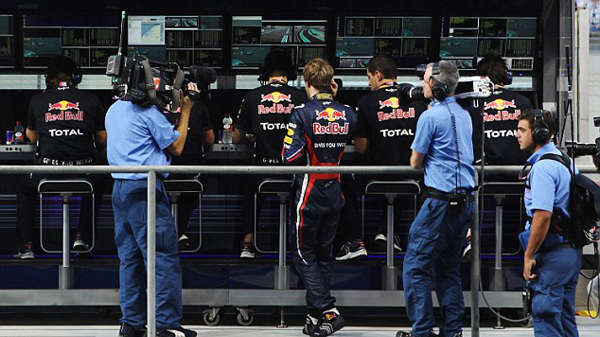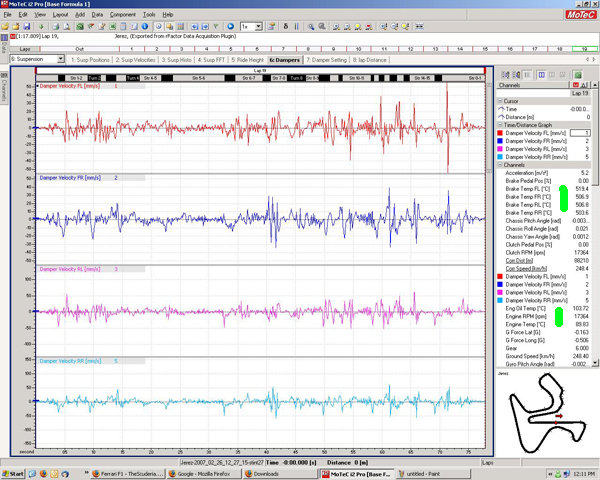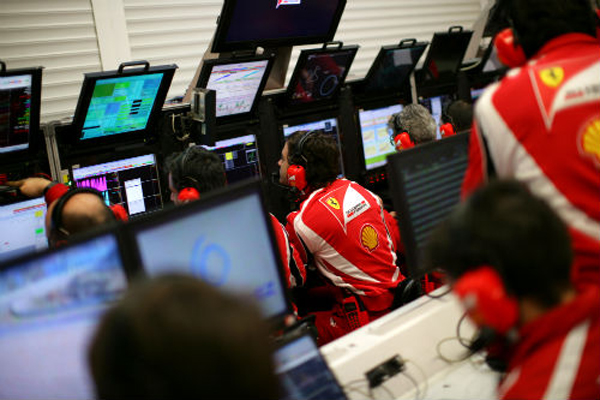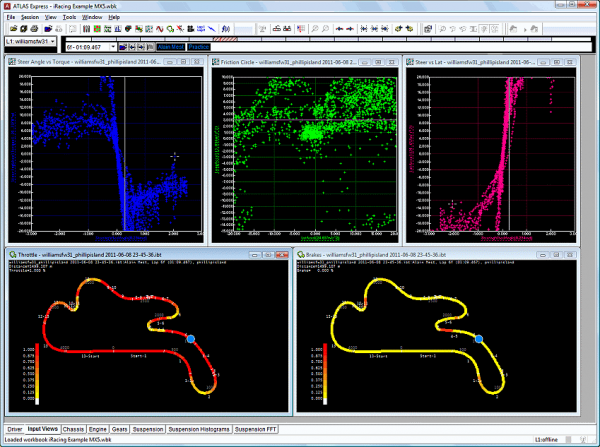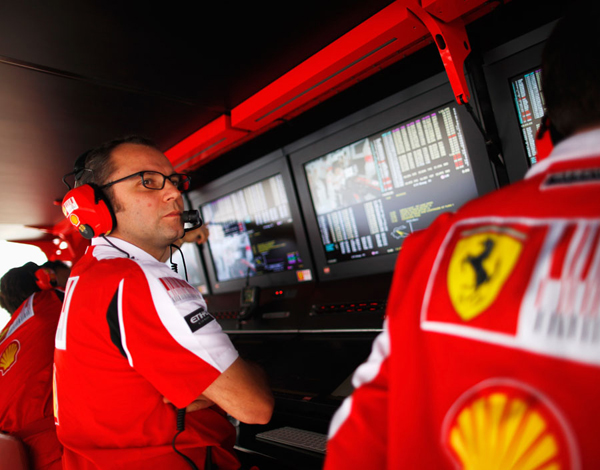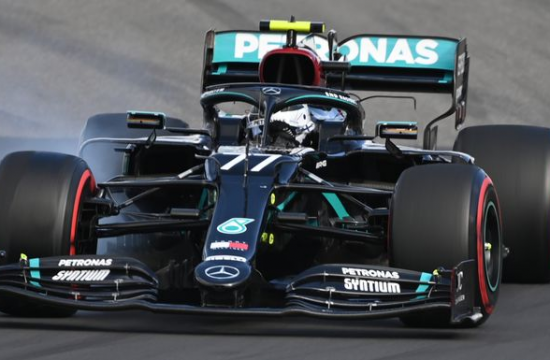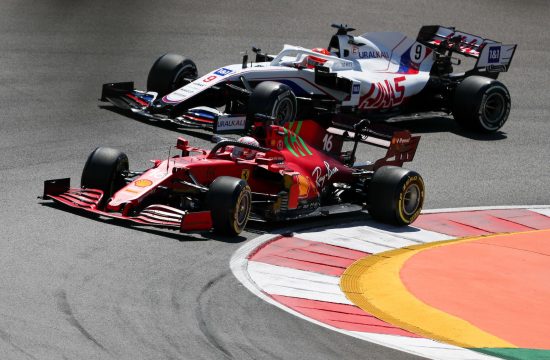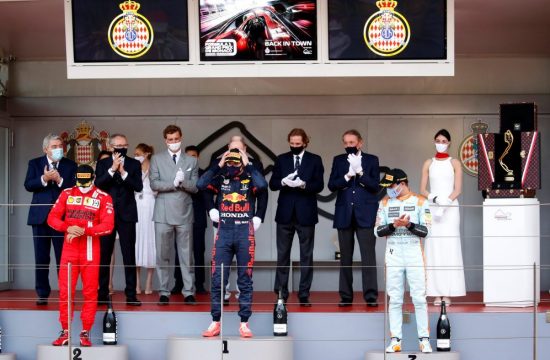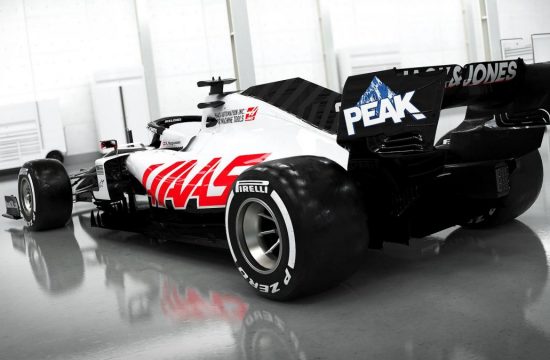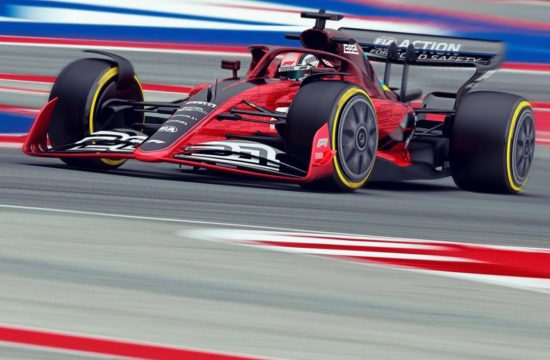The use of telemetry communication in F1 plays an imperative role; it essentially gives life to all the collective efforts from the drivers, engineers, technicians, team principals and tacticians – once a car is performing, all the work put into the car is transmitted back to the team via wireless data.
A driver may feel what the car is doing and can communicate by radio as to what he thinks may be of concern, but the true miniscule and accurate details of what is really going on is measured and collected by technological systems installed throughout the car. These can be anything from brake temperatures to engine management – in the picture above I have indicated these two readings in green.
A decade ago, engineers receiving data from the car could adjust systems accordingly to give the car maximum performance, but this was eventually regarded as taking away some of the driver skill, so all the engineers can do now with the data is advise the driver to make any changes, which can be implemented via their steering wheel.
The Garage
Whilst a car is circulating, whether testing, qualifying or racing, engineers back in the garage fastidiously study their laptops, analysing data sent from the car. The data collected looks something like the readout in the following picture.
Each team utilises networked and standardised circuits for the car’s ECU (Electronic Control Unit). The ECU receives data from the car’s internal devices and transmits it to the team’s computer servers. These devices fall into four categories:
Sensors: Tyre temperatures and pressures, oil temperatures and engine and exhaust temperatures.
Telemetry: Analysing the car’s data through graphs and charts.
Regulators: Regulating fuel.
Monitoring System: This is used to change a device’s settings and configuration within the car.
The above screen shot is an example from the ATLAS software program, which enables the team to study a car’s throttle output, braking, and steering angle vs. torque statistics throughout a lap.
The Pit Wall
During a race a team has around five members whose jobs involve studying the monitors from the pit wall. These members usually consist of the team director, the technical director, the team manager and both drivers’ race engineers. Imagine a football pitch’s dugout, but without an angry manager running up and down the sidelines. This is where all the important decisions are made concerning team strategy and managing the car.
What they are looking at are individual eye-level monitors and a row of smaller monitors all providing the team with enormous amounts of information. They can also view alternative camera positions, like the global (overall) picture, the onboard car footage, the rest of the cars, and the pit lane. There’s also the all-important monitor to analyse the lap times.
The team also have the addition of analogue programmes that provide data about the changing track temperature, the air pressure, and a detailed weather forecast. Any information regarding the stewards, penalties, safety car, or yellow flags is also available.
As the race progresses, the tyres suffer degradation and the fuel loads go down, so the team assesses all the relevant data and begin to work out the optimum strategy for a pit stop. Questions like, “Can the car stay out a few laps longer and leap-frog the car in front by setting blistering lap times whilst the other car makes its stop?” “Should they stop now and switch tyre compounds?” If their car is being held up in the dirty air behind another car, should they pit early, and data permitting, release them onto a clear track in fresh air?
Issues such as overheating brakes or engine and fuel problems can also be swiftly dealt with via radio to the driver. The driver can “turn down” the engine (reduce the rev limiter or adjust the fuel mix) to either save fuel or cool the engine. The same can be done with the brakes, and any problems concerning tyre pressures can be dealt with during a pit stop.
So whilst us mortals view F1 as a racetrack with cars fighting for position, the F1 teams and engineers see a hive of constant and changing information, millions of unseen transmitted bits of data communicating and linking them between the driver, car and computer.

